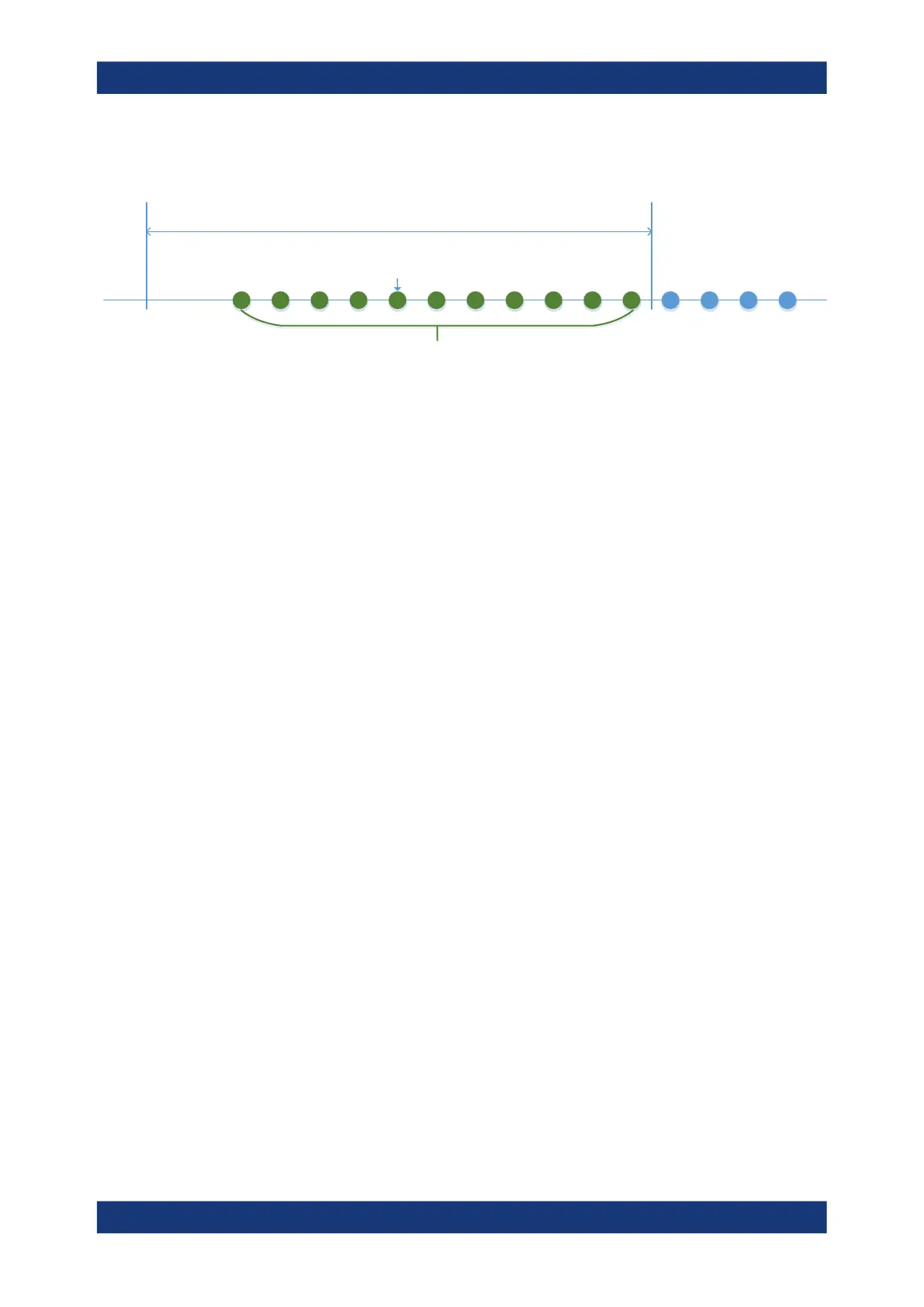VNA GUI reference
R&S
®
ZNL/ZNLE
384User Manual 1178.5966.02 ─ 20
where N is the number of points of the sweep (or sweep segment for segmented
sweeps).
1 n N
n – a/100·N/2 n + a/100·N/2
Length: a/100·N
Smoothing interval
Midpoint
Sweep points inside the smoothing interval
The range definition above takes boder cases and rounding into account.
Tips: Finding the appropriate aperture
A large smoothing aperture enhances the smoothing effect but can hide quick varia-
tions of the measured values and thus produce misleading results.
To avoid errors, observe the following recommendations.
●
Start with a small aperture and increase it only as long as you are certain that the
trace is still correctly reproduced.
●
Select a smoothing aperture that is small compared to the width of the observed
structures (e.g. the resonance peaks of a filter). If necessary, restrict the sweep
range or switch smoothing off to analyze narrow structures.
Remote command:
CALCulate<Chn>:SMOothing:APERture
Hold
Selects the "Max Hold" (peak hold) or "Min Hold" function for the active trace, or disa-
bles both functions ("Hold Off"). With enabled "Max Hold" or "Min Hold" function, the
displayed trace shows the maximum or minimum values that the analyzer acquired
since the start of the measurement. The "Max Hold" and "Min Hold" traces are real;
they are based on the magnitude of the trace values (the phase values are discarded).
The "Hold" process can be restarted any time using "Restart" (current trace) or
"Restart All" (all traces in the active channel setup). The "Hold" process is also restar-
ted automatically when the channel or trace settings are changed so that the previous
measurement results are no longer compatible.
Note: A memory trace is unformatted by definition. Therefore, a "to memory" operation
on a "Hold" trace actually stores the last measured trace data instead of the current
"Max Hold" or "Min Hold" values.
Remote command:
CALCulate<Chn>:PHOLd
Shift Trace
Functions for shifting the active trace in horizontal and vertical direction.
Stimulus ← Shift Trace
Shifts the active trace in horizontal direction, leaving the positions of all markers
unchanged. The unit of the offset value depends on the sweep type.
Note:
Trace softtool

